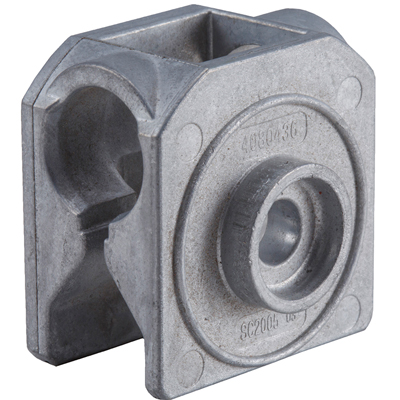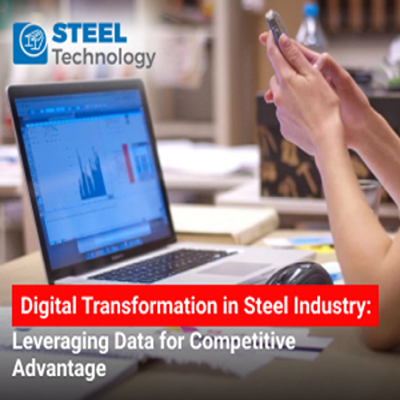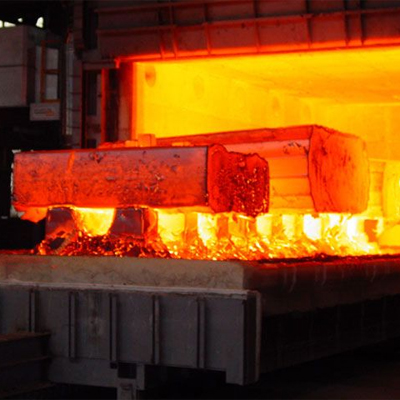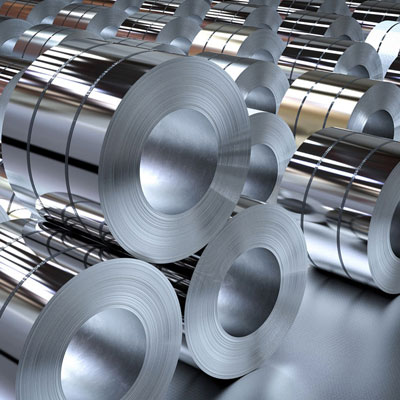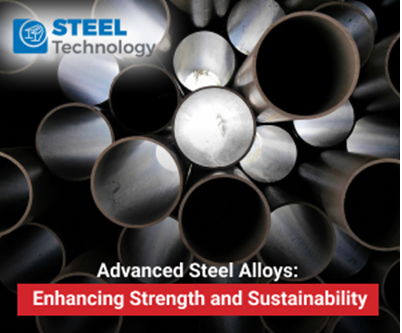The Role of Artificial Intelligence in Steel Production
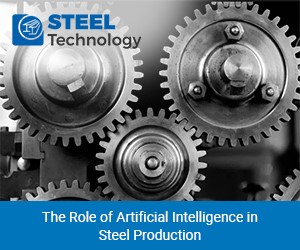
Introduction:
The steel industry has long been at the forefront of technological innovation, and in recent years, it has embraced artificial intelligence (AI) to revolutionize its processes. AI is playing a pivotal role in optimizing various aspects of steel production, from enhancing process efficiency to ensuring the highest quality products. In this article, we will delve into the multifaceted role of AI in the steel industry, exploring its applications in process optimization, quality control, predictive maintenance, and the evolving landscape of steel production technology.
I) AI in Process Optimization:
1. Data-Driven Insights: AI systems in steel production rely on vast datasets collected from various sensors and instruments throughout the manufacturing process. These datasets contain information about temperature, pressure, chemical composition, machine performance, and more. AI algorithms process this data to gain valuable insights.
2. Real-Time Analysis: One of the significant advantages of AI in process optimization is its ability to analyze data in real time. This means that as data is generated by sensors and machines on the factory floor, AI systems can instantly analyze it. This rapid analysis allows for quick decision-making and adjustments to ensure optimal conditions.
3. Predictive Modeling: AI uses historical data to create predictive models. These models can forecast how changes in process parameters will impact the final product. For example, if the AI system detects a deviation in the temperature of a blast furnace, it can predict how this change might affect the quality of the steel and make adjustments to mitigate potential issues.
4. Adaptive Control: AI-driven process optimization goes beyond static rule-based systems. AI systems can adapt and learn from the data they analyze. Over time, they become more refined in their decision-making, continually optimizing processes for the best results.
5. Energy Efficiency: Energy consumption is a significant concern in steel production. AI can optimize energy usage by adjusting the heating and cooling processes, reducing energy waste, and ensuring that energy-intensive equipment operates efficiently.
6. Quality Assurance: AI-driven process optimization is vital for maintaining consistent product quality. By monitoring and controlling various parameters, AI helps ensure that the steel produced meets stringent quality standards. Any deviations or anomalies can be detected and addressed promptly.
7.Cost Reduction: Through improved efficiency, reduced waste, and minimized downtime, AI-driven process optimization contributes to significant cost savings in steel production. This cost-effectiveness enhances the competitiveness of steel manufacturers in a global market.
II) AI in Quality Control:
1. Defect Detection with Computer Vision: AI plays a crucial role in identifying defects in steel products through advanced computer vision techniques. High-resolution cameras and sensors are used to capture detailed images of steel surfaces. AI algorithms then analyze these images to spot imperfections such as cracks, surface irregularities, or impurities. This automated process is far more precise and efficient than manual inspections, ensuring that even the tiniest defects are not overlooked.
2. Automated Sorting and Classification: AI-driven systems can automatically sort and classify steel products based on their quality characteristics. Products are categorized as per predefined quality criteria, allowing for efficient segregation of faulty items from those meeting quality standards. This ensures that only high-quality steel products are sent to customers.
3. Predictive Quality Assessment: AI doesn't only identify defects but also predicts product quality based on various process parameters and historical data. By analyzing the manufacturing process's variables, AI can estimate the final product's quality before it's even produced. If any parameter deviates from the ideal range, the system can take corrective actions to maintain the desired quality.
4. Real-Time Monitoring: AI continuously monitors the production process, comparing real-time data with predefined quality standards. If any deviations are detected, the system can immediately alert operators or initiate corrective measures. This real-time monitoring helps prevent the production of subpar steel and minimizes waste.
5. Traceability and Documentation: AI-enhanced systems maintain comprehensive records of the production history of each steel product. This traceability ensures transparency in the manufacturing process, aids in quality control audits, and provides valuable data for continuous process improvement.
6. Customized Quality Assurance: AI can be tailored to specific quality requirements for different steel products. Whether it's high-strength structural steel, corrosion-resistant steel, or other specialized alloys, AI can adapt its quality control criteria to match the unique specifications of each product.
7. Consistency and Compliance: AI-driven quality control ensures consistency in the quality of steel products, meeting industry standards and regulatory requirements consistently. This consistency is essential for maintaining a strong reputation in the market and building customer trust.
III) Predictive Maintenance:
Predictive maintenance is an anticipatory strategy for maintaining machinery and equipment, harnessing data and AI to anticipate potential failures. In the context of the steel industry, which relies on the continuous operation of large-scale machinery, predictive maintenance plays a crucial role in minimizing downtime, cutting maintenance expenses, and optimizing overall production efficiency.
1. Data Collection and Sensors: Predictive maintenance relies on the collection of vast amounts of data from sensors placed on equipment and machinery throughout the steel production facility. These sensors monitor various parameters such as temperature, pressure, vibration, and equipment performance.
2. Real-Time Monitoring: AI systems continuously analyze the data from these sensors in real-time. By comparing current data with historical patterns, AI algorithms can identify deviations or anomalies that may indicate a potential equipment failure.
3. Condition-Based Predictions: AI uses the information gathered to predict the condition of equipment. For example, it can estimate when a critical component, like a bearing in a rolling mill, will likely require maintenance or replacement. This predictive capability allows maintenance teams to schedule downtime during planned maintenance windows, minimizing disruption to production.
4. Failure Prediction: Machine learning models are employed to forecast precise equipment failures before they manifest. These models take into account an extensive array of factors, including historical records of failures, current operational conditions, and maintenance logs. Through the analysis of these variables, AI systems can accurately identify potential issues and proactively alert maintenance teams.
5. Reducing Downtime: Predictive maintenance minimizes unplanned downtime, which is costly and disruptive to steel production. By addressing maintenance needs before a breakdown occurs, manufacturers can keep production lines running smoothly and avoid costly emergency repairs.
6. Cost Savings: Implementing predictive maintenance results in cost savings by reducing the frequency of unnecessary preventive maintenance and extending the lifespan of equipment. Maintenance activities become more efficient as they are based on actual equipment conditions rather than fixed schedules.
7. Equipment Longevity: Predictive maintenance not only prevents unexpected breakdowns but also extends the overall lifespan of machinery. By addressing issues before they become critical, equipment experiences less wear and tear, ensuring it remains in service for a more extended period.
8. Safety Improvement: Predictive maintenance enhances safety in steel production facilities. By addressing potential equipment failures proactively, the risk of accidents and injuries related to equipment malfunctions is significantly reduced.
IV) Steel Production Technology:
1. Smart Factories and Automation: The advent of Industry 4.0 has brought smart factories to the forefront of steel production. These facilities integrate AI and automation throughout the production process. AI-powered robots and machines handle tasks such as material handling, precision cutting, and welding. This automation not only improves efficiency but also enhances safety by reducing the need for manual labor in potentially hazardous environments.
2. Digital Twins: AI technology enables the development of digital twins in steel production processes. Digital twins are virtual counterparts of physical systems, effectively replicating the real-time production process. Engineers and operators can leverage these digital twins for simulations, testing, and optimizations, enhancing their ability to make well-informed decisions and drive process improvements.
3. Process Optimization: AI is utilized to optimize various stages of steel production. It can manage and control factors like temperature, pressure, and chemical composition with precision. By analyzing data from sensors and process variables, AI ensures that the production process runs efficiently and consistently, resulting in higher-quality steel products.
4. Quality Control Enhancements: AI systems enhance quality control by using computer vision and machine learning to inspect and analyze steel products for defects. This technology detects imperfections with remarkable accuracy, ensuring that only products meeting strict quality standards reach the market. Additionally, AI can predict product quality based on real-time process data, allowing for immediate adjustments to maintain quality.
5. Energy Management: AI technology is vital for optimizing energy usage in steel production. AI-driven models analyze energy consumption patterns and provide insights into opportunities for energy savings. By adjusting processes to minimize energy waste, steel manufacturers can reduce operational costs and decrease their environmental footprint.
6. Supply Chain Optimization: AI aids in supply chain management by forecasting demand, optimizing inventory levels, and streamlining logistics. This ensures that the right raw materials are available when needed, minimizing production disruptions and enhancing overall efficiency.
7. Customization and Innovation: Advanced steel production technologies, including AI-driven processes, allow for greater customization of steel products. Manufacturers can produce specialized alloys and meet specific customer requirements more efficiently. Additionally, AI supports innovation by facilitating research and development efforts, enabling the creation of new steel grades and production methods.
8. Environmental Sustainability: Modern steel production technology, with the integration of AI, prioritizes sustainability. AI helps reduce energy consumption, minimize waste, and lower emissions, aligning with global efforts to combat climate change and promote responsible manufacturing practices.
Conclusion:
In summary, the incorporation of artificial intelligence (AI) into the steel industry marks a significant transformation, reshaping the processes of steel production, quality control, maintenance, and overall management. The multifaceted involvement of AI in steel manufacturing, encompassing process optimization, quality assurance, predictive maintenance, and the adoption of cutting-edge production technology, is fundamentally altering the landscape of the industry.
AI's impact on process optimization cannot be overstated. Through real-time monitoring, data analysis, and predictive modeling, AI ensures that manufacturing processes operate efficiently, consistently, and with a focus on sustainability. This results in reduced energy consumption, enhanced resource allocation, and cost savings for steel manufacturers.
In the realm of quality control, AI-driven defect detection, automated sorting, and predictive quality assessments have elevated product quality and consistency to new heights. The ability to identify and address defects with unmatched precision ensures that only high-quality steel products reach the market, fostering customer satisfaction and trust.
Predictive maintenance, powered by AI, minimizes downtime, reduces maintenance costs, and extends the lifespan of equipment. It accomplishes this by analyzing real-time data and predicting equipment failures before they occur, enabling planned maintenance and eliminating costly emergencies.
Advanced steel production technology, with AI at its core, has led to the emergence of smart factories, digital twins, and highly optimized processes. These innovations enable steel manufacturers to operate efficiently, customize products, and respond to market demands more effectively.
Furthermore, the adoption of AI-driven technology aligns with sustainability goals. By optimizing processes, reducing waste, and enhancing energy efficiency, the steel industry contributes to a more eco-friendly and responsible manufacturing ecosystem.
To conclude, the steel industry's adoption of artificial intelligence has not only bolstered its competitive edge but has also demonstrated a dedication to quality, sustainability, and innovation. As AI continues its evolution, its significance within the steel sector will only grow, fundamentally influencing the future of global steel production. Steel manufacturers that harness the potential of AI will find themselves well-prepared to flourish in an ever-evolving and highly competitive global market.





